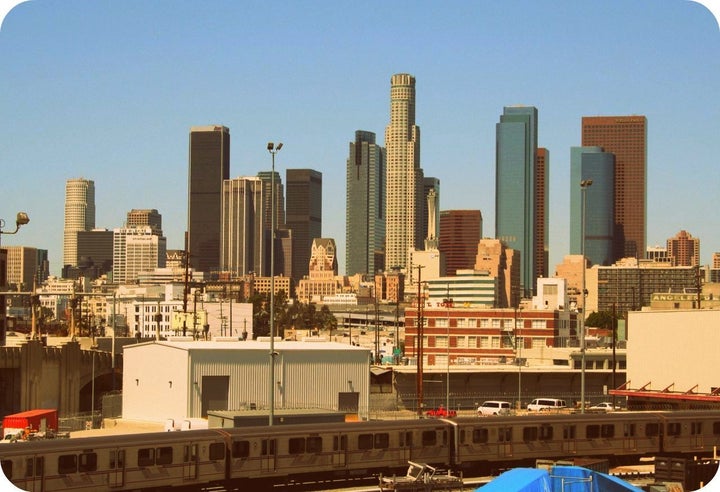
This article is part of a series published in partnership with the Boyle Heights Beat.
By Kevin Martinez
Playwright and Boyle Heights native Josefina López recalls the first question she was asked by students at a prestigious Australian film school after mentioning her hometown.
“Aren’t you afraid of getting shot?”
Popular depictions of the Los Angeles suburb as a dangerous and gang-riddled neighborhood inspired López to write Real Women Have Curves, a coming-of-age story about a Mexican-American teenager growing up in East Los Angeles. Lopez says that the purpose of the play was to portray “the beauty [of Boyle Heights] for people that didn’t grow up here and don’t get to see it.” She would also co-write the critically-acclaimed 2002 film adaption.
Boyle Heights is only 15 minutes away from Hollywood and has been a popular film location for years, but some of the most popular movies to come out of the neighborhood have been about gangs. For instance, Blood In, Blood Out (1993), while loosely based on the true life story of poet Jimmy Santiago Baca, centers around three Latinos and their roles in gang wars in the 70s and early 80s.
Similarly, American Me (1992) highlights a teenager who forms a gang with two of his closest friends, breaks into a store, and is sent to prison where he empowers himself as a gang leader.
Alice Im, an English teacher and movie buff at Theodore Roosevelt High School in Boyle Heights, says that these films negatively affect the Latino population not just in the local community, but in society as a whole.
“That’s why stereotypes exist,” says Im, “Somebody writes a story, makes a movie about it and creates an image of something that is not real. I believe the media has a lot of power in dictating what reality is.”
Chon Noriega, director of the UCLA Chicano Studies Research Center, says that “For the most part, Hollywood ignores Latinos. When you see a number of Latinos in movies, you typically see a gardener, a cholo, or maids. And those stereotypical roles are disrespected.” To accurately portray Latinos, Noriega suggested that Hollywood should employ more Latino writers, directors, and behind-the-camera talent.
However, not all movies shot here are about gangs. “There are also movies filmed in Boyle Heights that have had a positive effect on the community,” says Tom McCluskey, a video production teacher at Roosevelt High School and USC School of Cinematic Arts alumni. “There is Under the Same Moon and A Better Life.”
Under the Same Moon (2007) tells the immigrant story of a nine-year-old Mexican boy who makes the dangerous journey to the United States to reunite with his mother after his grandmother passes away. And A Better Life (2011) tells the story of an undocumented Mexican immigrant who starts his own business in Boyle Heights and struggles to keep his son from gangs. Mexican actor Demián Bichir earned a Best Actor Oscar nomination for his role.
Although Boyle Heights is generally associated with drugs, poverty, gangs, and violence, McCluskey cites the area’s rich, cultural traditions in these films. “There are definitely strong family connections, loyalty, and great cultural history here. And that is what makes Boyle Heights unique.”
Certainly, the area’s portrayal by Hollywood defines how Boyle Heights is seen in popular culture and by the public psyche. López says media brokers should use that power for good because “movies speak to the unconscious mind.”
***
Kevin Martinez is a senior at Roosevelt High School's Math, Science & Technology Magnet Academy. He enjoys discovering new music, playing soccer on his school team, and traveling. He hopes to major in sociology at Boston University or somewhere on the East Coast. He plans to visit the 50 states before he turns 25.
This article was produced for Boyle Heights Beat, which features the stories and blogs of community members in the Latino immigrant neighborhood of Boyle Heights, in Los Angeles, as well as the articles produced by the youth reporting staff of the Boyle Heights Beat, a bilingual quarterly newspaper and a project of the USC Annenberg School of Journalism and La Opinion.